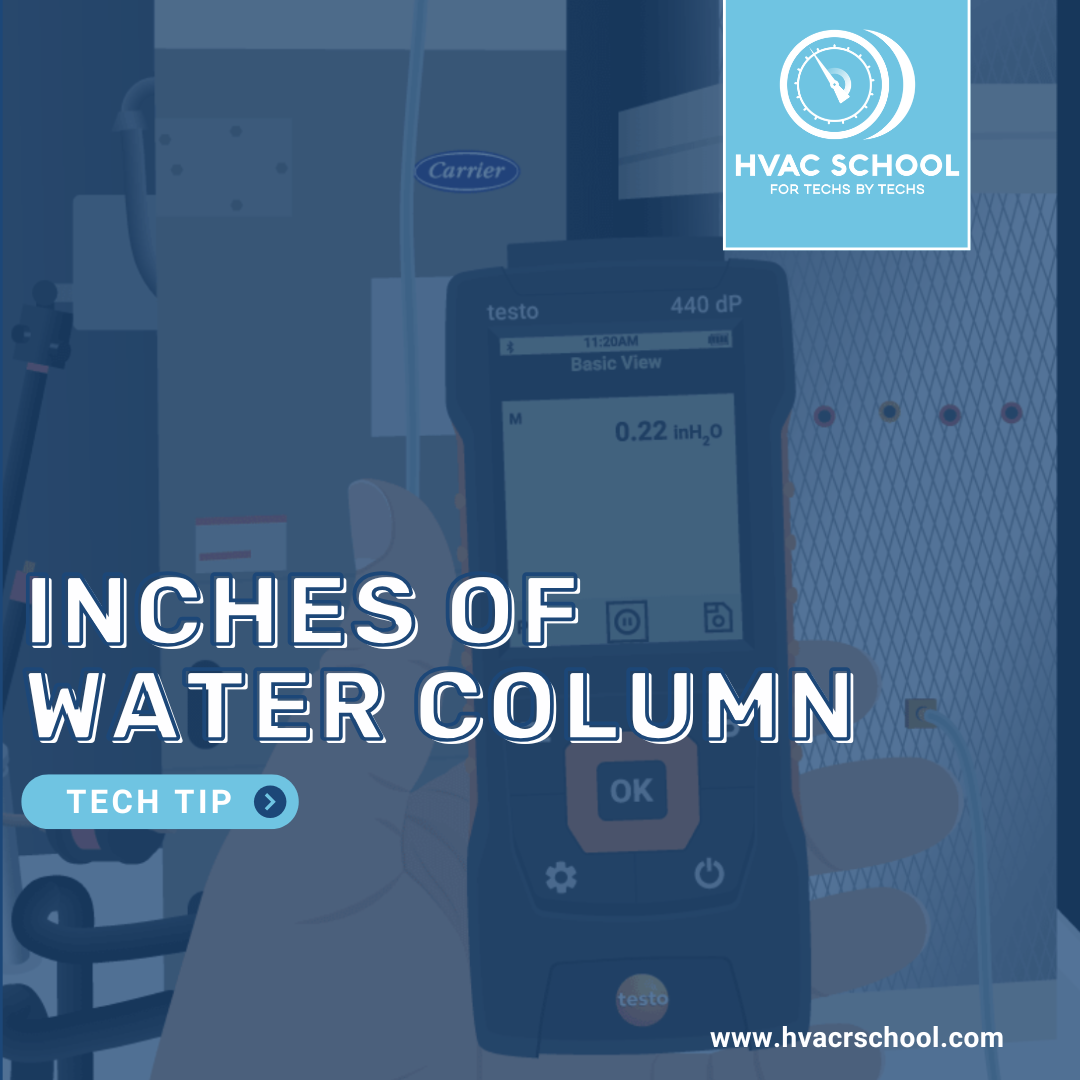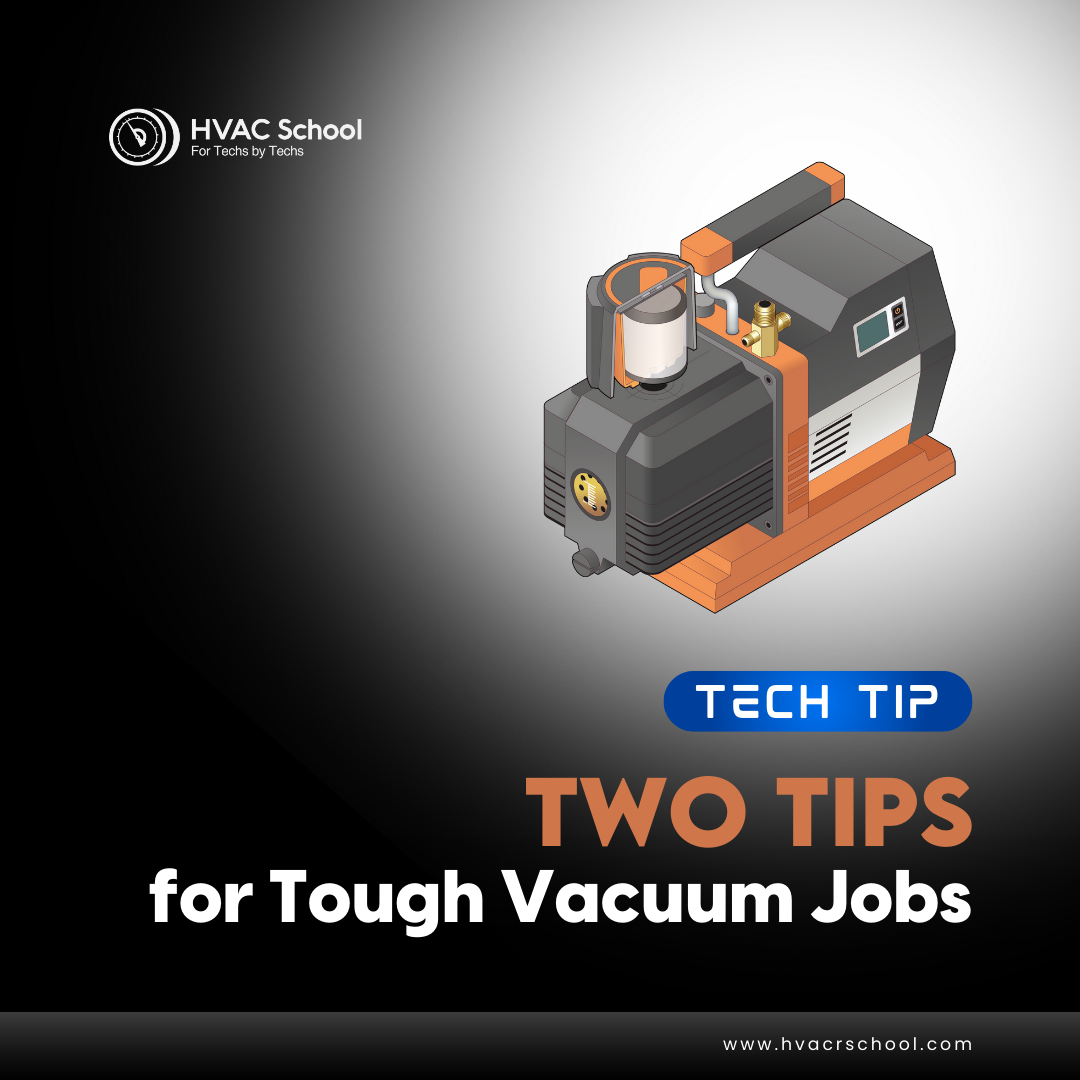Get Tech Tips
Subscribe to free tech tips.
Receiver Basics

Receivers, which we sometimes call “liquid receivers,” are components that store refrigerant. You'll see it on everything from small self-contained refrigeration units to very large commercial and industrial systems.
Many new techs who are used to residential air conditioning confuse receivers with accumulators. It's an understandable error, as they both contain liquid refrigerant. However, you'll find the accumulator on the suction line before the compressor; it prevents liquid from entering the compressor. On the other hand, you'll find a receiver on the liquid line after the condenser. That's because it stores liquid refrigerant that doesn't need to be in circulation for the current heat load.

The liquid receiver stores refrigerant when the system is operating at less than its maximum heat load. In general, systems with receivers are designed so that the receiver can hold the entire system's charge and still be no more than 80% full. That design allows you to pump down the entire system charge into the receiver without the danger of creating hydrostatic pressure; that refers to very high pressures resulting from full liquid expansion. (That's the same reason why we should only fill recovery tanks up to 80% full.)

The multi-position service valve at the outlet of the receiver is called a “King valve.” It can be used for refrigerant circuit access, and it may be fully front seated (turned clockwise) for pump down.
Because a receiver has both liquid and vapor present inside, many techs argue that the refrigerant cannot be “subcooled” in the receiver. The truth is that while the refrigerant that interacts between the liquid and vapor at the top of the receiver is at saturation, the refrigerant below the liquid line can be and usually will and should be subcooled.
—Bryan









Comments
I have a reciever Oz. An ice machine that’s 6.8liter or 229 oz capacity. Mfg recomened charge is 250 oz. With my head Master and 4 lbs extra for cold Ambient Temps, does this not exceed reciever limits? Mfg tech says I don’t know, put in a fan switch & forget head aster. But it’s still bypassing and trying to flood condenser. What is right
I have a reciever Oz. An ice machine that’s 6.8liter or 229 oz capacity. Mfg recomened charge is 250 oz. With my head Master and 4 lbs extra for cold Ambient Temps, does this not exceed reciever limits? Mfg tech says I don’t know, put in a fan switch & forget head aster. But it’s still bypassing and trying to flood condenser. What is right
Explore detailed information about the Audemars Piguet Royal Oak Offshore 15710ST via this platform , including market values ranging from $34,566 to $36,200 for stainless steel models.
The 42mm timepiece features a robust design with selfwinding caliber and durability , crafted in titanium.
Used Piguet Royal Oak 15710 st reviews
Compare secondary market data , where limited editions reach up to $750,000 , alongside vintage models from the 1970s.
View real-time updates on availability, specifications, and investment returns , with free market analyses for informed decisions.
Explore detailed information about the Audemars Piguet Royal Oak Offshore 15710ST via this platform , including market values ranging from $34,566 to $36,200 for stainless steel models.
The 42mm timepiece features a robust design with selfwinding caliber and durability , crafted in titanium.
Used Piguet Royal Oak 15710 st reviews
Compare secondary market data , where limited editions reach up to $750,000 , alongside vintage models from the 1970s.
View real-time updates on availability, specifications, and investment returns , with free market analyses for informed decisions.
This flight-themed slot blends exploration with exciting rewards.
Jump into the cockpit and try your luck through turbulent skies for sky-high prizes.
With its vintage-inspired design, the game captures the spirit of early aviation.
download aviator game
Watch as the plane takes off – withdraw before it disappears to lock in your rewards.
Featuring seamless gameplay and realistic sound effects, it’s a must-try for slot enthusiasts.
Whether you’re looking for fun, Aviator delivers uninterrupted action with every round.
This flight-themed slot blends exploration with exciting rewards.
Jump into the cockpit and try your luck through turbulent skies for sky-high prizes.
With its vintage-inspired design, the game captures the spirit of early aviation.
download aviator game
Watch as the plane takes off – withdraw before it disappears to lock in your rewards.
Featuring seamless gameplay and realistic sound effects, it’s a must-try for slot enthusiasts.
Whether you’re looking for fun, Aviator delivers uninterrupted action with every round.
Hello! I know this is kinda off topic but I was wondering which blog platform are you using for this site? I’m getting fed up of WordPress because I’ve had issues with hackers and I’m looking at alternatives for another platform. I would be fantastic if you could point me in the direction of a good platform.
Hello! I know this is kinda off topic but I was wondering which blog platform are you using for this site? I’m getting fed up of WordPress because I’ve had issues with hackers and I’m looking at alternatives for another platform. I would be fantastic if you could point me in the direction of a good platform.
Онлайн-площадка — интернет-представительство независимого детективного агентства.
Мы предоставляем услуги в решении деликатных ситуаций.
Группа профессионалов работает с предельной этичностью.
Мы берёмся за поиски людей и разные виды расследований.
Услуги детектива
Любая задача получает персональный подход.
Опираемся на новейшие технологии и ориентируемся на правовые стандарты.
Ищете реальную помощь — добро пожаловать.
Онлайн-площадка — интернет-представительство независимого детективного агентства.
Мы предоставляем услуги в решении деликатных ситуаций.
Группа профессионалов работает с предельной этичностью.
Мы берёмся за поиски людей и разные виды расследований.
Услуги детектива
Любая задача получает персональный подход.
Опираемся на новейшие технологии и ориентируемся на правовые стандарты.
Ищете реальную помощь — добро пожаловать.
some genuinely great information, Gladiola I observed this.
some genuinely great information, Gladiola I observed this.
Need more info, what’s is your outside temp?
Need more info, what’s is your outside temp?
To leave a comment, you need to log in.
Log In